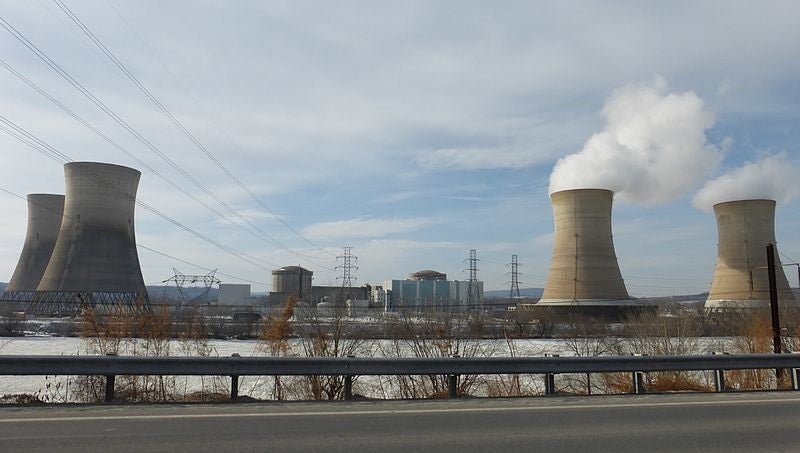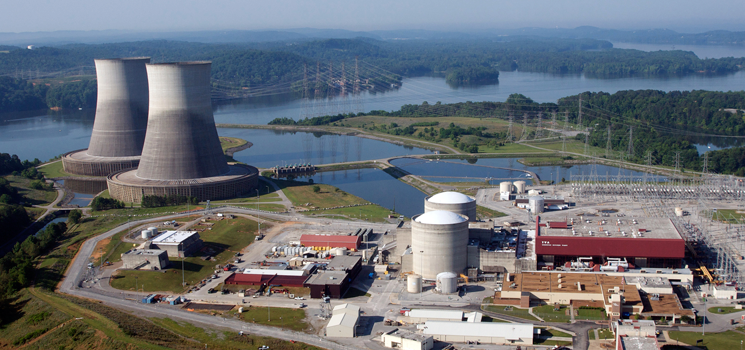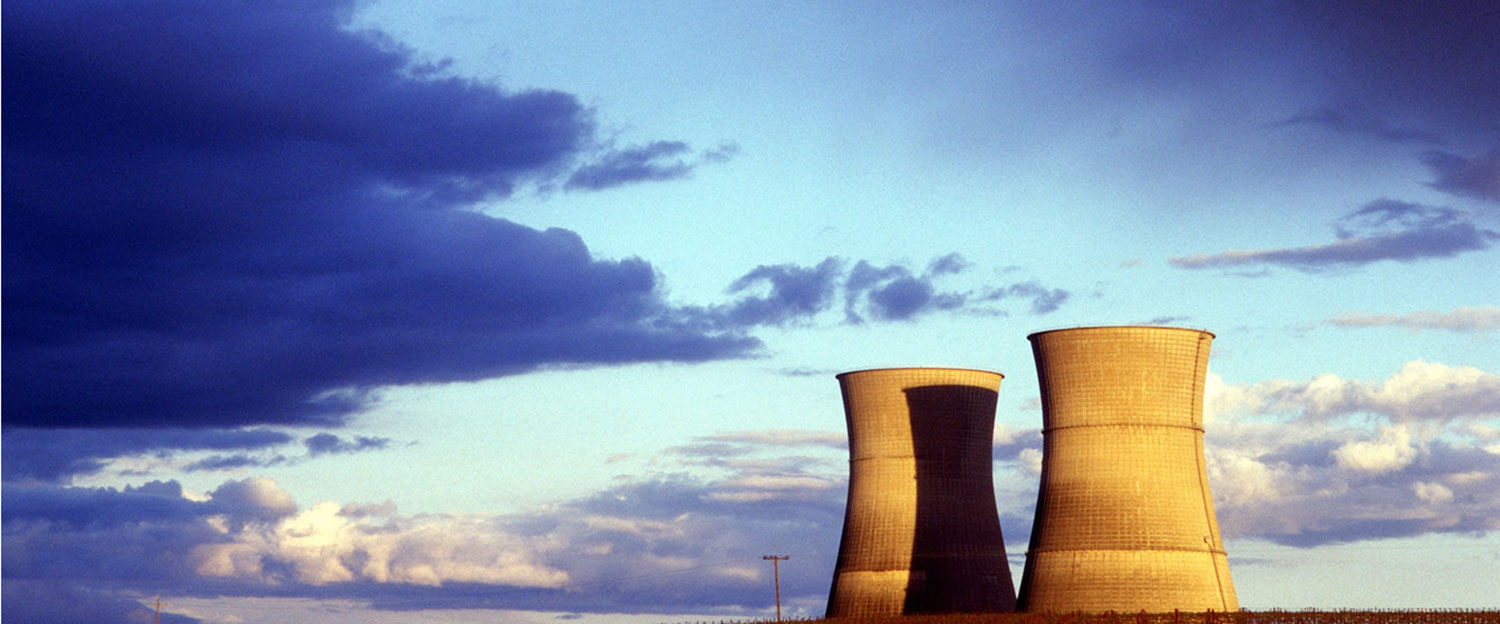How Do Human-built Nuclear Power Plants on Earth Generate Energy
Nuclear power plants generate electricity by using controlled nuclear fission chain reactions ie splitting atoms to heat water and produce steam to power turbines. This basically means nuclear power plants are producing maximum power more than 93 of the time during the year.

What Is A Nuclear Power Station And What Are Its Benefits
The spinning of this turbine is what generates the electricity that can then be added to the local grid.

. Although Yucca Mountain has yet to be officially chosen there are no other sites being considered. In nuclear fission atoms are split apart to form smaller atoms releasing energy. The heat created by nuclear fission warms the reactors cooling agent.
Nuclear power plants heat water to produce steam. As the world attempts to transition its energy systems away from fossil fuels towards low-carbon sources of energy we have a range of energy options. Nuclear power is generated by splitting atoms to release the energy held at the core or nucleus of those atoms.
So there you have it. C nuclear fission D converting kinetic energy into electricity. Due to pressure inside the system the water does not boil.
Uranium is the fuel most widely used in nuclear reactors at power plants. This hot pressurized water flows through thousands of looped pipes while a second stream of water flows around the outside of the pipes inside the steam generator. Burning the coal heats a giant boiler full of water.
Commercial nuclear power plants range in size from about 60 megawatts for the first generation of plants in the early 1960s to over 1000 megawatts. The nuclear chain reaction produces heat inside the reactor vessel and heats water to a very high temperature. The main nuclear fuels are uranium and plutonium.
This process nuclear fission generates heat that is directed to a. As they split the atoms release tiny particles called fission products. Using a new analytical approach the researchers delved into.
Nuclear Regulatory Commission is an independent federal government agency responsible for regulating the commercial use of nuclear materials. Nuclear reactors usually rely on uranium to fuel the chain reaction. The energy released from this chain reaction creates heat.
E converting gravitational potential energy into electricity. Nuclear power plants use heat produced during nuclear fission to heat water. In the US where nuclear power produces nearly 40 of the countrys.
E converting gravitational potential energy into electricity. The steam powers turbines which turn generators. The steam is used to spin large turbines that generate electricity.
Nuclear power is the use of nuclear reactions to produce electricityNuclear power can be obtained from nuclear fission nuclear decay and nuclear fusion reactions. Nuclear reactor creates heat that is used to make steam The steam turns a turbine connected to an electromagnet called a generator The generator produces electricity. 13 The core of the Sun is.
A nuclear reactor converts into electricity the heat produced by the fission of uranium nuclei. B nuclear fusion. The nuclear reaction heats the fuel the fuel heats the water to make steam the steam spins the turbine the turbine turns the generator and the generator makes electricity.
A chemical reactions. Nuclear energy and renewable technologies typically emit very little CO2 per unit of energy production and are also much better than fossil. B nuclear fusion.
Fission products cause other uranium atoms to split starting a chain reaction. 5 How do human-built nuclear power plants on Earth generate energy. Presently the vast majority of electricity from nuclear power is produced by nuclear fission of uranium and plutonium in nuclear power plantsNuclear decay processes are used in niche applications.
The steam then turns an electric generator to produce electricity. The key question therefore is how best to supply those growing energy needs. Nuclear fission produces heat and this heat is used to heat water and make steam.
The core water cycles back to the reactor to be reheated and the process is repeated. C nuclear fission D converting kinetic energy into electricity. 6 Suppose you put two protons near each other.
Nuclear power plants also have large amounts of metal and concrete which require large amounts of energy to manufacture. Fission releases a tremendous amount of energy in the form of heat. The generators produce electricity.
As the water turns to steam it is pressurized and flows through a turbine which is attached to a generator. Because of the electromagnetic force the two protons will. Nuclear energy is created when uranium atoms are split in a process called fission.
In a nuclear energy plant heat is produced from splitting atoms a process called nuclear fission. This heat creates steam that is. The heat from nuclear fission is used to raise steam which runs through turbines which in turn power the electrical generators.
A chemical reactions. When it comes to building a nuclear power plant in the United Stateseven of a well-known designthe total bill is often three times as high as expected. This electricity production can be adjusted according to demand.
Our existing energy system is built on fossil fuels but their combustion for energy generates carbon dioxide CO 2 emissions a key contributor to climate changeThe energy sector is responsible for about three-quarters of all greenhouse gas emissions and as such fundamentally transforming it is. This water is under less pressure so the heat. Nuclear power generates electricity much like coal- or diesel-powered plants.
Nuclear is often labeled a clean energy source because no greenhouse gases GHGs or other air emissions are released from the power plant. Renewable energy technologies such as hydropower wind and solar but also nuclear power. During normal operation nuclear reactors are quite environmentally friendly particularly with regard to greenhouse gases.
In a nuclear power station a nuclear reaction releases heat nuclear energy is converted to heat energy. Uranium is a very heavy metal that is abundant on. DOE has built a full-scale system of tunnels into the mountain at a cost of over 5 billion.
Those tubes heat a separate water source to create steam. Thats about 15 to 2 times more as natural gas and coal units and 25 to 35 times more reliable than wind and solar plants. An MIT team has revealed why in the field of nuclear power experience with a given technology doesnt always lower costs.
Nuclear power comes from nuclear fission. As you can see nuclear energy has by far the highest capacity facto r of any other energy source. The water in the core is heated by nuclear fission and then pumped into tubes inside a heat exchanger.
12 How do human-built nuclear power plants on Earth generate energy. A at the same temperature and density as the surface. If fossil fuels are used for mining and refining uranium ore or if fossil fuels are used when constructing the nuclear power plant then the emissions from burning those fuels could be associated with the electricity that nuclear power.
Coal power plants rely on heat to generate electricity. The International Energy Agency estimates the developed world is on track to lose 66 of its current nuclear capacity by 2040.



No comments for "How Do Human-built Nuclear Power Plants on Earth Generate Energy"
Post a Comment